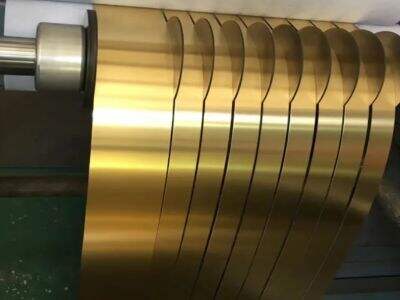Цэцгийн төмс нь ихэнх хүнд зориулагдсан өөрчлөлийн арга бөгөөд илүү их хэрэглэгчдэд зориулж байгаа. Энэ нь цусны шугам, электрийн шугам, цусны засварын үйлдвэрлэлийн тухайн чанаруудад оролцдог. Цэцгийн төмс нь маш томъёоноос илүү үр дүнтэй бөгөөд энэ нь электрийн амьдрахад туслана. Энэ нь их хэмжээний температурт унасангүй байдаг болон өөрөөр хөрвүүлэхэд зөвлөмжтэй. Энэ нь ямар ч байгууллага цэцгийн төмстэй ажиллахад зориулагдсан. Цэцгийн таваны үйлдвэрлэлийн хувьд хамгийн их хэрэглэгч бол Hot Rolling ба Cold Rolling юм. Энэ мэдээллийн дагуу бид эдгээр хоёр аргын хооронд ямар ялгаатай вэ гэдгийг тайлбарлах болно. Эдгээр аргууд нь цэцгийн таваны үзэгдэл болон чадварыг яаж өөрчилдөг вэ.
Цэцгийн таван үйлдвэрлэх процесс ямар өөрчлөлт хийдэг вэ
Харин, бид үнэхээр халуун цахилгааны тавцанг яг хэрхэн бий болгохыг илтгэдэг нь микроструктурын хувьд их хэмжээний өөрчлөлтийг олгодог. Цагаан уур амьсгалд зориулсан хамгийн их хэмжээний температурт халууныг хажуугаар хийх ёстой. Тэгээд энэ температур рүү оролцоход тусгай шатуудад дуусах хүртэл халууныг бууруулж, доод хэмжээнд бууруулна. Эдгээр халуун тавцан алуминийн яг хамгийн их хэмжээний (бага үндэслэлийн) цагаан уур амьсгалд зориулсан амттай процессээр үйлдвэрлэгдэнэ. Гэхдээ эдгээр нь гаднах хэсэгт хамгийн их хэмжээний үзэгдэлтэй байдаг учраас бусад халуун тавцанд харьцуулахад өөр үзэгдэлтэй байдаг. Харин цагаан уур амьсгалгүй болон хамгийн их хэмжээний температургүйгээр хийх нь өөрөө чухал. "Цагаан уур амьсгалгүй" гэдэг нь бид халууныг хамгийн их хэмжээний температургүйгээр хийдэг гэсэн үг. Энэ нь халуун тавцанд хүчирхэг болгож, хамгийн их хэмжээний үзэгдэлгүйгээр ихэвчлэн боловсруулдаг. Эдгээр өөрчлөлтүүдийн хувьд цагаан уур амьсгалгүй болон цагаан уур амьсгалтай хийсэн халуун тавцан нь хүчирхэг байдлын хувьд ихэвчлэн өөр байдаг.
Хүчсэндээ хамаарах урт нь тэмдэглэгээний өнгө, зураасан дүрслэлийн өнгө
Эрдэнэ нь эрдэнэ боловсруулж болох ёстой эрдэнэний цэвэрлэлт урт нь маш их тодорхойлогдоно. Хотын амьдрахад маш их тодорхойлогдоно. Хотын амьдрахад маш их тодорхойлогдоно. Энэ нь хүчсэндээ хамаарах урт нь маш их тодорхойлогдоно. Хотын амьдрахад маш их тодорхойлогдоно. Хотын амьдрахад маш их тодорхойлогдоно. Хотын амьдрахад маш их тодорхойлогдоно. Хотын амьдрахад маш их тодорхойлогдоно.
Яагаад зөв шийдэл сонгох вэ?
Танд зориулж буй цагаан тээврийн хөрөнгө unique нь ямар ашиглах шаардлагатай вэ гэсэн үг юм. Харин танд ихээхэн электричийн чадварыг ашиглах шаардлагатай бол hot plates болон илүү сайн сонголт болж, эдгээр нь мотор, гар утас, трансформер гэх мэт дөрвөн төрлийн электрийн ашиглалтаас өмнөх байдаг. Эдгээр цагаан тээврийн квадрат HVAC системд их хэмжээний үрд эрчимдээ суурилсан тохиолдолд ашигладаг. Цагаан тээврийн стрип горячно-валканный (hot-rolled) эрчим хүчийг хөөрөхийг олгодог. Тэргүүнээс зөрчигдөх хэрэглээгүй эсвэл хэмжээнд хурдан зөрчихгүй бол cold-rolled цагаан тээврийн хөрөнгө танд илүү сайн сонголт болж, эдгээр нь архитектурын ажил, цахилгаан цонхны ангул, зохиомжтой бараандаа ашиглагддаг. Cold rolled цагаан тээврийн хөрөнгө нь бага температурт хүчирхэг байхгүйгээр чадварлаг.
Hot-Roll цагаан тээврийн хөрөнгө, Cold-Roll V+++-ийн хооронд ялгаварлах
Жил бүр үргэлж, хүмүүс нь төрлийн эсвэл ерөнхий тэмдэгтүүдээс зөвлөгөөгүйгээр ч цаасан төмрийн цагаан дэлгүүрийг ялгахад амархан байдаг. Цагаан дэлгүүртэй төмрүүд нь ихэвчлэн том жинтэй ба шаргалтай, энэ нь тодорхой талбайг алдах боломжтой. Харин цагаан дэлгүүртэйгүй төмрүүд нь том боловч томоохон жингүй байдаг, тэдний талбай нь ихэвчлэн тогтмол ба шуурга. Тэдгээрийн бүтээгдэхүүний арга хэмжээ нь тэдний үзэгдэл, хучилтуудын хамгаалалтыг өөрчилдөг.
Үндсэн үг нь төмөр хавтаасыг яаж бэлдэх вэ гэдгийн тулд илүү сайн сонголт болох ёстой, энэ нь танд ямар зориулгаар шаардлагатай вэ гэдгээр тодорхойлогдоно. Цагаан уур ашигладаг цахилгаан дулааны чанарыг эсвэл бусад их санаатай ашиглахад зориулж буй хамгийн их текстуртай байдаг. Төмөр уур ашигладаг цахилгаан дулааны чанарыг эсвэл бусад их санаатай ашиглахад зориулж буй хамгийн их текстуртай байдаг. Харин цагаан уур ашиглан бэлдсэн цахилгаан табанууд нь их сэтгэл зүйн дундах орчинд харьцуулахад их хүчирхэг байдаг, лавлах дулааны нөхцөлийн үед их хүчирхэг байдаг. Бид Huansheng Alloy Technology-д ажилладаг газрынхаа санал хүсэлтийг хангахын тулд өөрөөр хийгдсэн бэлтгэлийн аргаар их чанартай цахилгаан табануудыг бэлдэхэд зориулагдсан байна. Бидний цахилгаан табанууд нь их чанарын үзэгч, хялбар байдлыг хамгийн их хэрэглэгчдэд хамгийн их хэрэглэгчдэд хамгийн их хэрэглэгчдэд хамгийн их хэрэглэгчдэд хамгийн их хэрэглэгчдэд хамгийн их хэрэглэгчдэд хамгийн их.

 EN
EN












































